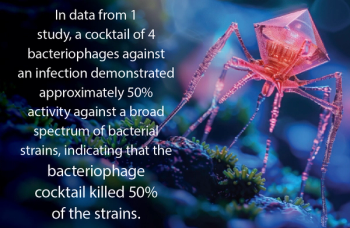
Researchers Advise Classification of Community Onset BSI Into Separate CA and HCA Categories
Bloodstream infections (BSI) have been traditionally classified as either community-acquired (CA) or hospital-acquired (HA) in origin. However, a third category of healthcare-associated (HCA) community onset disease has been increasingly recognized. The objective of a study by Lenz, et al. (2012) was to compare and contrast characteristics of HCA-BSI with CA-BSI and HA-BSI.
Â
All first episodes of BSI occurring among adults admitted to hospitals in a large health region in Canada from 2000 to 2007 were identified from regional databases. Cases were classified using a series of validated algorithms into one of HA-BSI, HCA-BSI, or CA-BSI and compared on a number of epidemiologic, microbiologic, and outcome characteristics.
Â
A total of 7,712 patients were included; 2,132 (28%) had HA-BSI, 2,492 (32%) HCA-BSI, and 3,088 (40%) had CA-BSI. Patients with CA-BSI were significantly younger and less likely to have co-morbid medical illnesses than patients with HCA-BSI or HA-BSI (p < 0.001). The proportion of cases in males was higher for HA-BSI (60%; p < 0.001 vs. others) as compared to HCA-BSI or CA-BSI (52% and 54%; p = 0.13). The proportion of cases that had a poly-microbial etiology was significantly lower for CA-BSI (5.5%; p < 0.001) compared to both HA and HCA (8.6 vs. 8.3%). The median length of stay following BSI diagnosis 15 days for HA, nine days for HCA, and eight days for CA (p < 0.001). Overall the most common species causing bloodstream infection were Escherichia coli, Staphylococcus aureus, and Streptococcus pneumoniae. The distribution and relative rank of importance of these species varied according to classification of acquisition. Twenty-eight day, all cause case-fatality rates were 26%, 19%, and 10% for HA-BSI, HCA-BSI, and CA-BSI, respectively (p < 0.001).
The researchers concluded that healthcare-associated community onset infections are distinctly different from CA and HA infections based on a number of epidemiologic, microbiologic, and outcome characteristics. They say this study adds further support for the classification of community onset BSI into separate CA and HCA categories. Their research was published in
Reference: Lenz R, et al. The distinct category of healthcare associated bloodstream infections. BMC Infectious Diseases 2012, 12:85 doi:10.1186/1471-2334-12-85
Newsletter
Stay prepared and protected with Infection Control Today's newsletter, delivering essential updates, best practices, and expert insights for infection preventionists.






